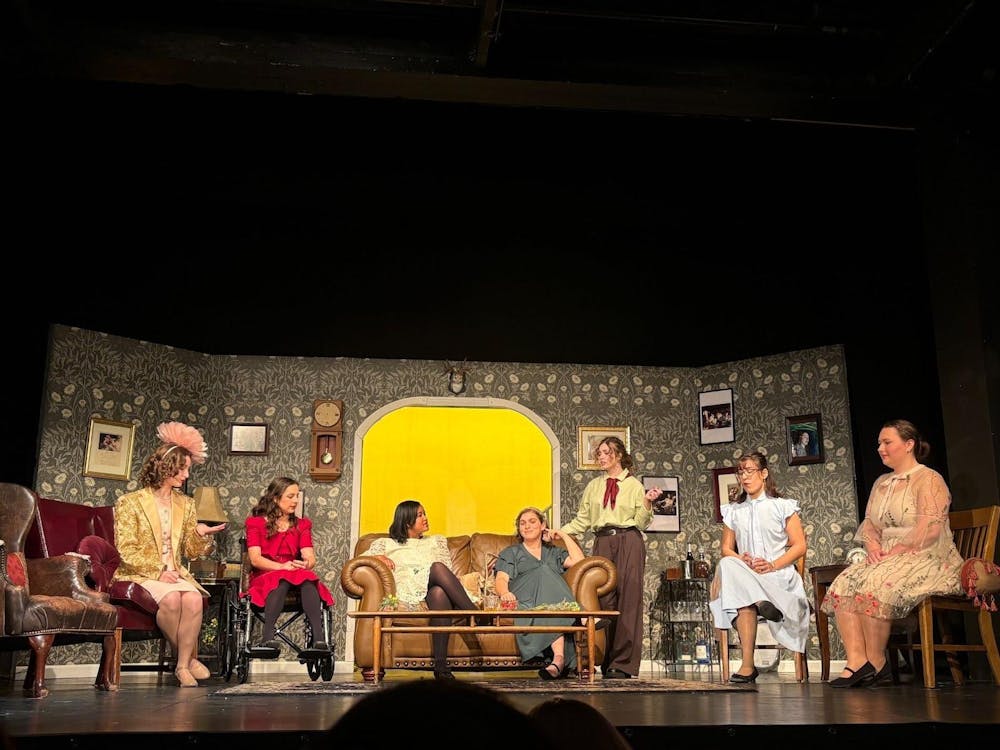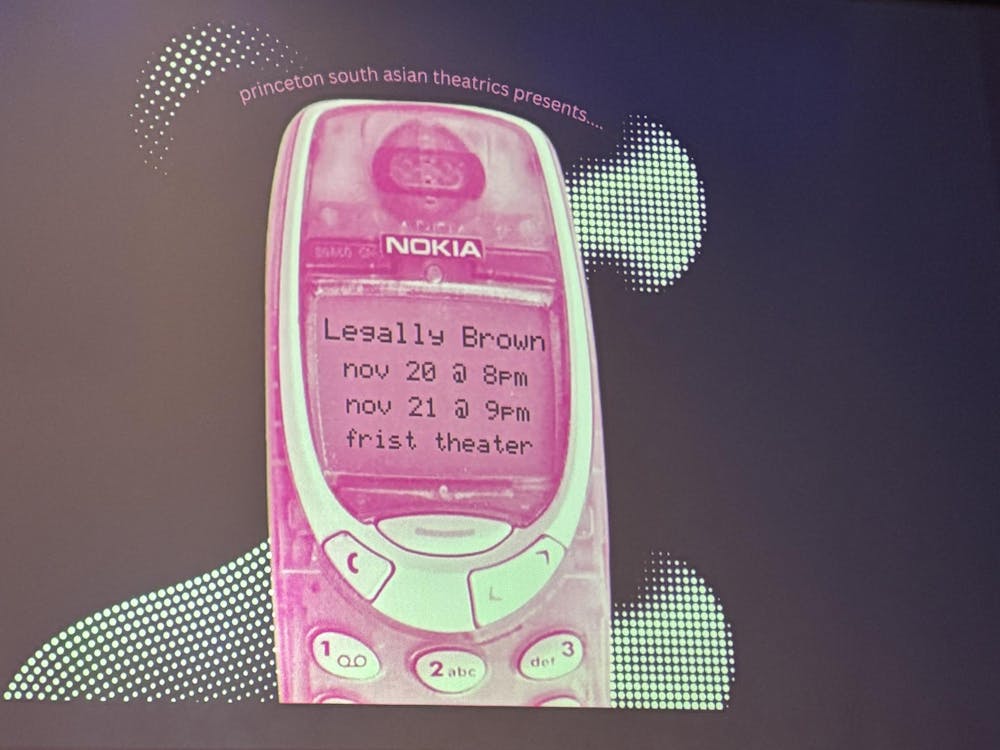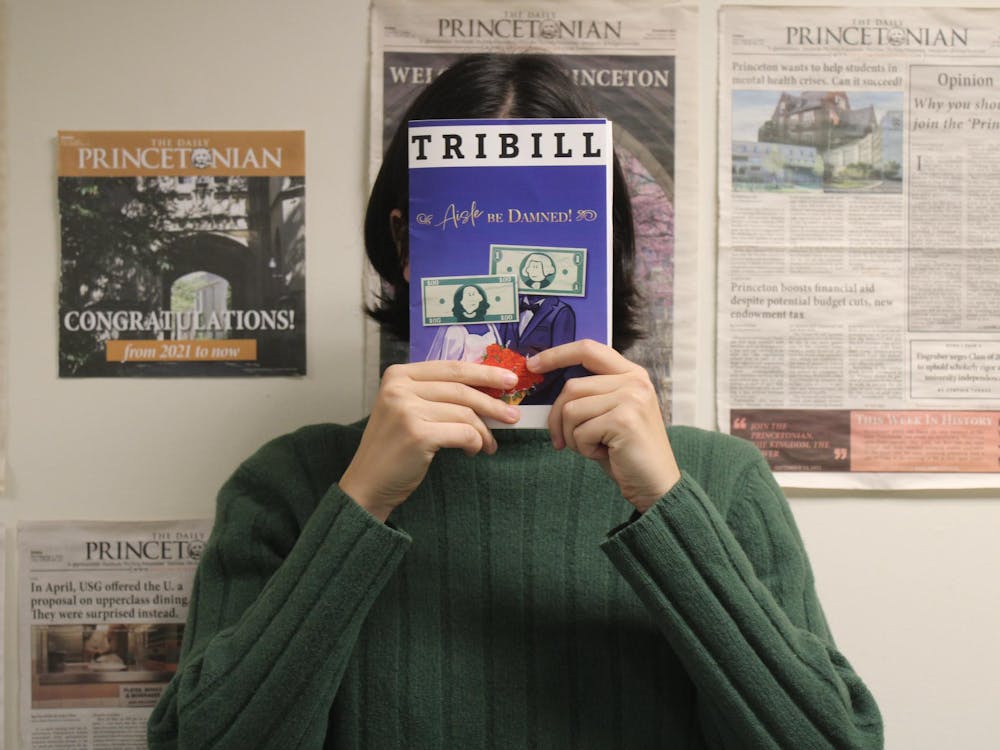“Does anyone want to go see a play tomorrow night? It’s called ‘SMILE’ and it’s a one-man show about depression!”None of my friends respond to my message, even after I add the qualifiers, “but it’s a comedy!!” and “it's also freee!”
“SMILE” is written and performed by Clayton Raithel ’12, and directed by Jeff Kuperman ’12 and Harvard graduate Rick Kuperman. Last Saturday’s performance in the Matthews Acting Studio at 185 Nassau Street included a post-show workshopping session, in which the three creators invited audience members to share feedback and critiques for future improvements.
The one-man show tells the story of Raithel’s post-graduation decline into depression following a bad breakup and his move to New York City. And it’s a comedy.
As an undergraduate, Raithel was in Quipfire! and the Princeton Triangle Club, both of which he said contributed to his natural inclination to see the world in a comical light.
“It got to the point where I was telling these stories, and just because of the type of person who I am, I was telling them in a very funny and entertaining way,” Raithel said in an interview with The Daily Princetonian.
Raithel explained that interpreting his experiences through the lens of humor allowed him not only moments of catharsis, but also of healing, when he realized he could use his stories to make art. He drew inspiration from comedians like Mike Birbiglia and Maria Bamford, who often “lead with their vulnerability” in their acts.
Raithel pitched the idea of doing a comedy about his depression to Jeff Kuperman ’12 last September. The two knew each other from their time together at Princeton. Jeff Kuperman then brought in his brother, Rick, with whom he runs the production company Kuperman Brothers.

“What I think Clayton does really well is, as he’s telling these stories, he walks you through the way that his rational brain and his emotional brain are at odds with each other in a very relatable way,” Jeff Kuperman said. “It was heartbreaking and it was hilarious, and I said, ‘This is what theater is, so let’s go ahead and let’s make the show!’ ”
Raithel opens the show describing his time at Princeton and his senior year girlfriend, Chelsea. “I was the FUCKING man!” appears in text on the screen alongside several old photos.
“We would make out, and then we made out when we were sober. In college, that’s how you know you’re dating,” Raithel said in the play, referring to the start of his relationship with Chelsea.
Throughout the play, sound and video are used extensively, functioning almost as independent characters that interact with Raithel and provide information to the audience. All three are experienced video and sound designers, and their use of media adds another dimension to this one-man show. Sound and video complement Raithel’s narrative, whether in the form Raithel’s friends’ voices, clips from movies he references or even a fake Yelp map Raithel made of the “Best places to cry in New York City.”

In another scene, which the three call the “balls on a bike rack” scene, Raithel is running to catch a cab, but, as he puts it, he’s stopped short when he runs directly into a bike rack and keels over. In the play, he starts laughing:
“I realize I’m going to be single forever, and I don’t need my balls,” he says.
This juxtaposition of tragedy and comedy, the three noted, was both necessary and natural.
“There’s a common saying that comedy is tragedy plus time,” Raithel said in our interview. “The world is tragic, the world is full of dark things, but we want to get together in the same room and laugh about it; that’s the only way we can keep going on. For me, that was something very natural.”
The play also uses metaphors to integrate the comedy with its heavy subject matter. In one scene, Raithel is heartbreakingly describing his ex-girlfriend as a balloon that has flown away, and the childlike feeling of sadness the experience left within him.
“To be honest, I really liked having sex with that balloon,” he says in the play. The audience exploded with laughter.
Raithel brings down the wall between tragedy and comedy, almost as though the former corresponds to his rational brain, and the latter, his emotional brain. It’s easy to laugh at our emotions; they’re often ridiculous, especially when we don’t fully understand them. But combining our messy sentimentality with more rational logic, and combining tragedy with comedy, yields an artistic examination of ourselves and our psyche.
“Your tears and your laughter go together for so much of the show. Those things coexist, and we shouldn’t separate them. In a lot of ways, those are the extremes of human emotions,” Raithel said. “To have those things coexist speaks to something that I went through, but also I think a lot of people can relate to.”







